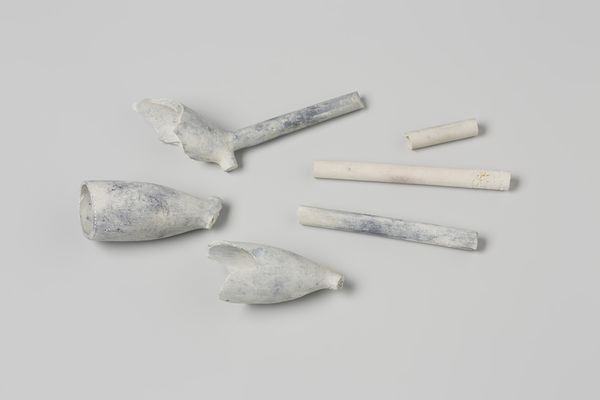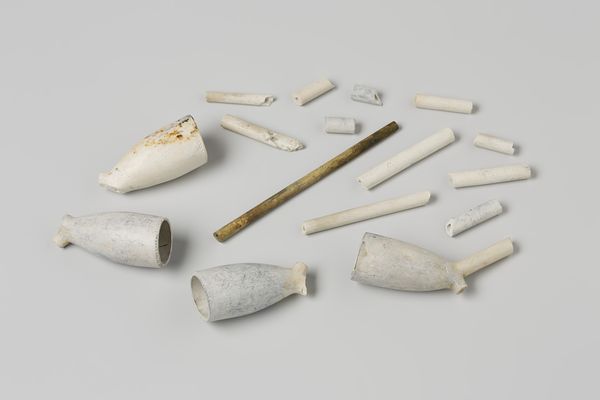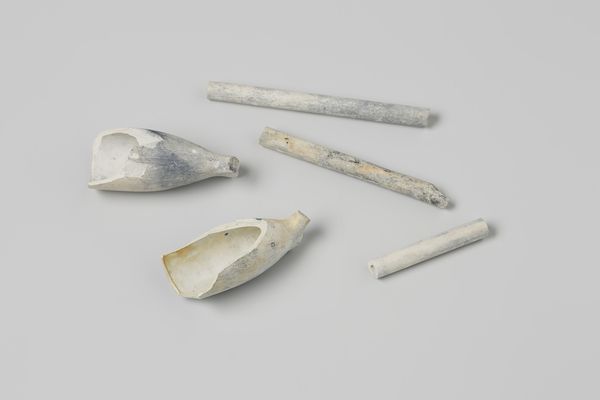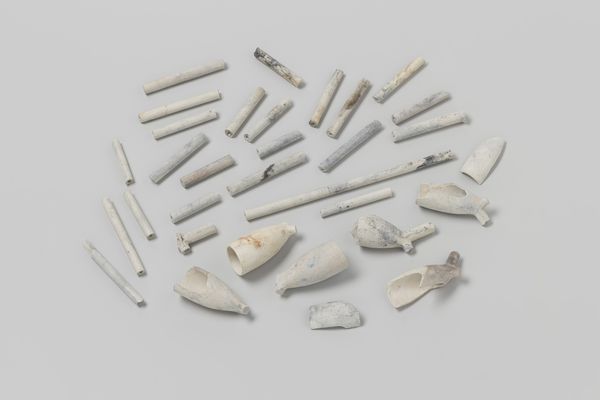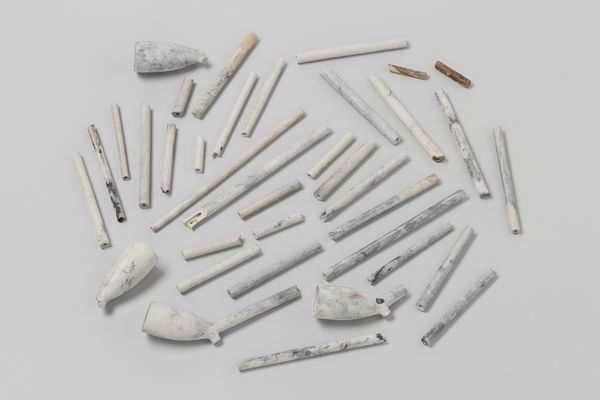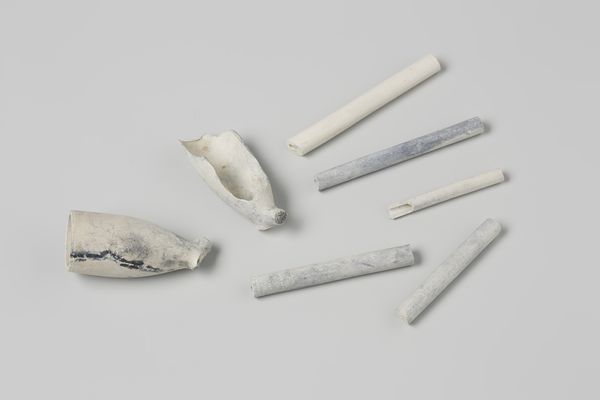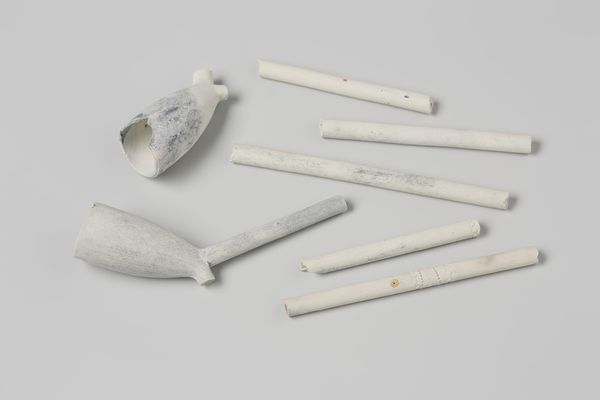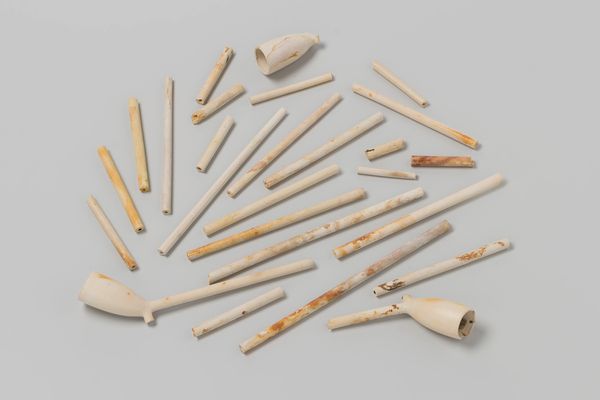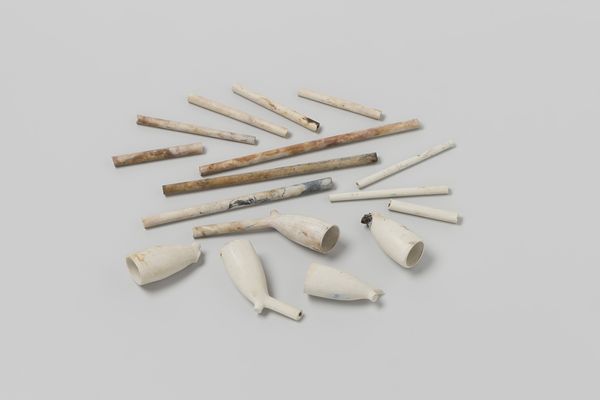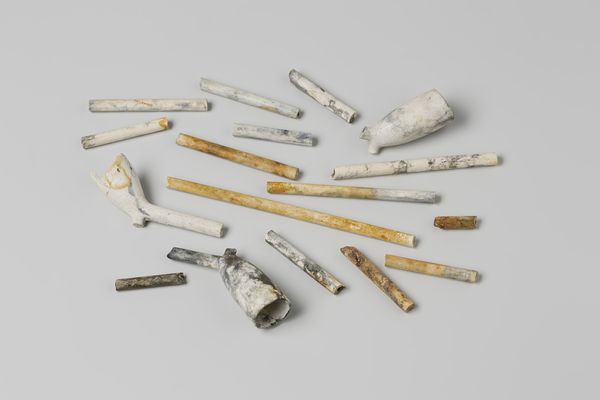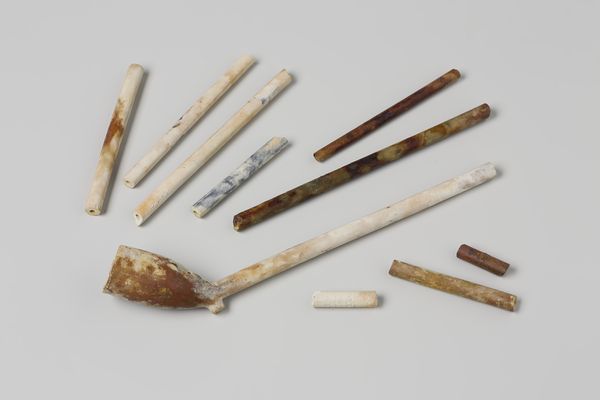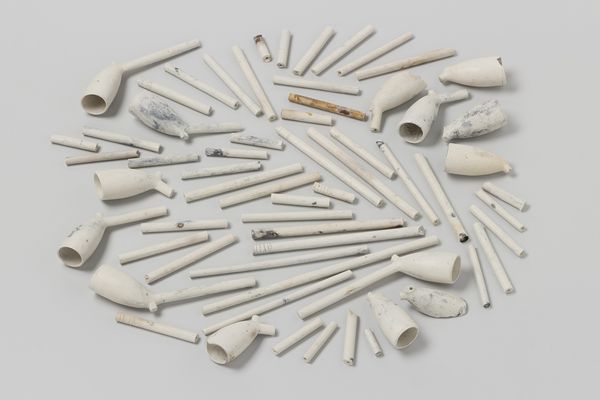
Fragmenten van pijpenkoppen en pijpenstelen uit het wrak van de Oost-Indiëvaarder 't Vliegend Hart Possibly 1700 - 1735
0:00
0:00
ceramic, found-object
#
baroque
#
dutch-golden-age
#
ceramic
#
found-object
#
history-painting
Dimensions: length 10 cm, width 1.9 cm, depth 4.1 cm, length 7.8 cm, diameter 0.5 cm
Copyright: Rijks Museum: Open Domain
Curator: My eyes are drawn immediately to these pale objects, stark against the background. Editor: Indeed. What we’re looking at is titled "Fragmenten van pijpenkoppen en pijpenstelen uit het wrak van de Oost-Indi\u00ebvaarder 't Vliegend Hart"—"Fragments of pipe bowls and pipe stems from the wreck of the East Indiaman 't Vliegend Hart.'" These ceramic pieces are dated tentatively between 1700 and 1735. Curator: Found objects rescued from a shipwreck! Instantly, the act of smoking itself, and the ritual surrounding it, become materials in their own right. Who made these pipes? What was the process of their production and distribution? Were they mass-produced objects of early consumer culture, or carefully crafted artisanal goods? Editor: An iconographic reading highlights tobacco as a symbol of trade, colonialism, and leisure in the Dutch Golden Age. The act of smoking becomes a communal act, linking individuals across social classes through shared rituals and experiences. These fragments remind us of fleeting moments of relaxation or contemplation amidst turbulent sea voyages. Curator: The 'Vliegend Hart' itself—the Flying Heart—represents the tangible risks inherent in the Dutch East India Company’s operations. Each fragment of clay carries a history of labor, production, trade routes, and exchange. It all highlights the complex interplay of material conditions that enabled these smoking habits. Editor: And each puff becomes an ephemeral offering to the gods of commerce, of life and death. Think of sailors passing time during the long voyages, sharing stories, anxieties, and the communal pipe. It creates powerful mental images! Curator: Precisely! From a materialist lens, the presence of pipe fragments at a shipwreck compels us to explore the global flows of commodities, as these once useful objects now tell a story of maritime disaster and the ephemerality of colonial ventures. Editor: To reflect on the fleeting nature of earthly desires. These modest pipes evoke vanished lives, submerged ambitions, and the relentless passage of time. The very fact that they were made into fragments gives us much food for thought, wouldn’t you agree? Curator: Absolutely. By analyzing material culture alongside its historical context, we can reveal deeper narratives about human existence and aspiration. Editor: Indeed, and these humble pipes bridge past and present in ways that stir the imagination. Thank you.
Comments
No comments
Be the first to comment and join the conversation on the ultimate creative platform.
